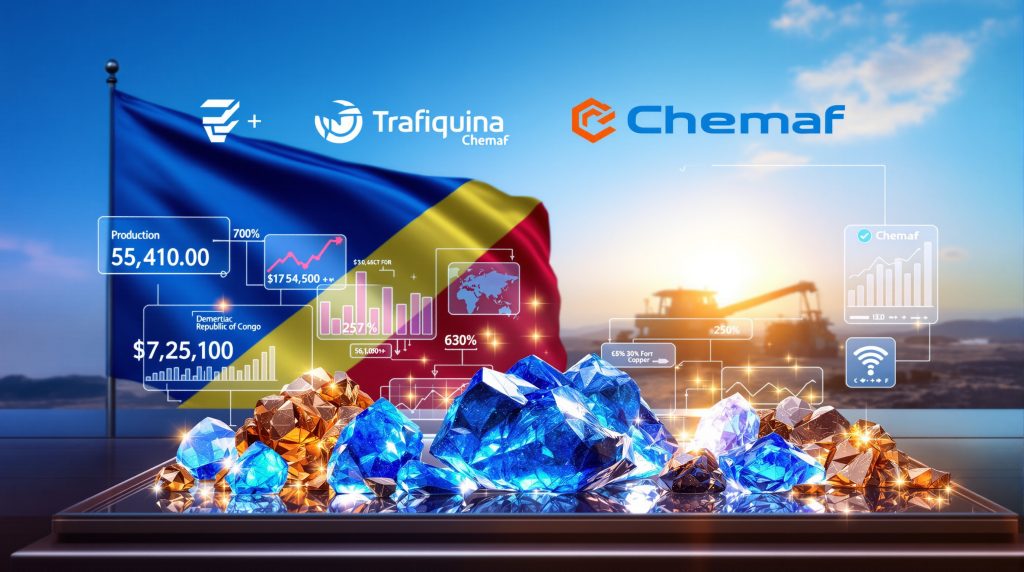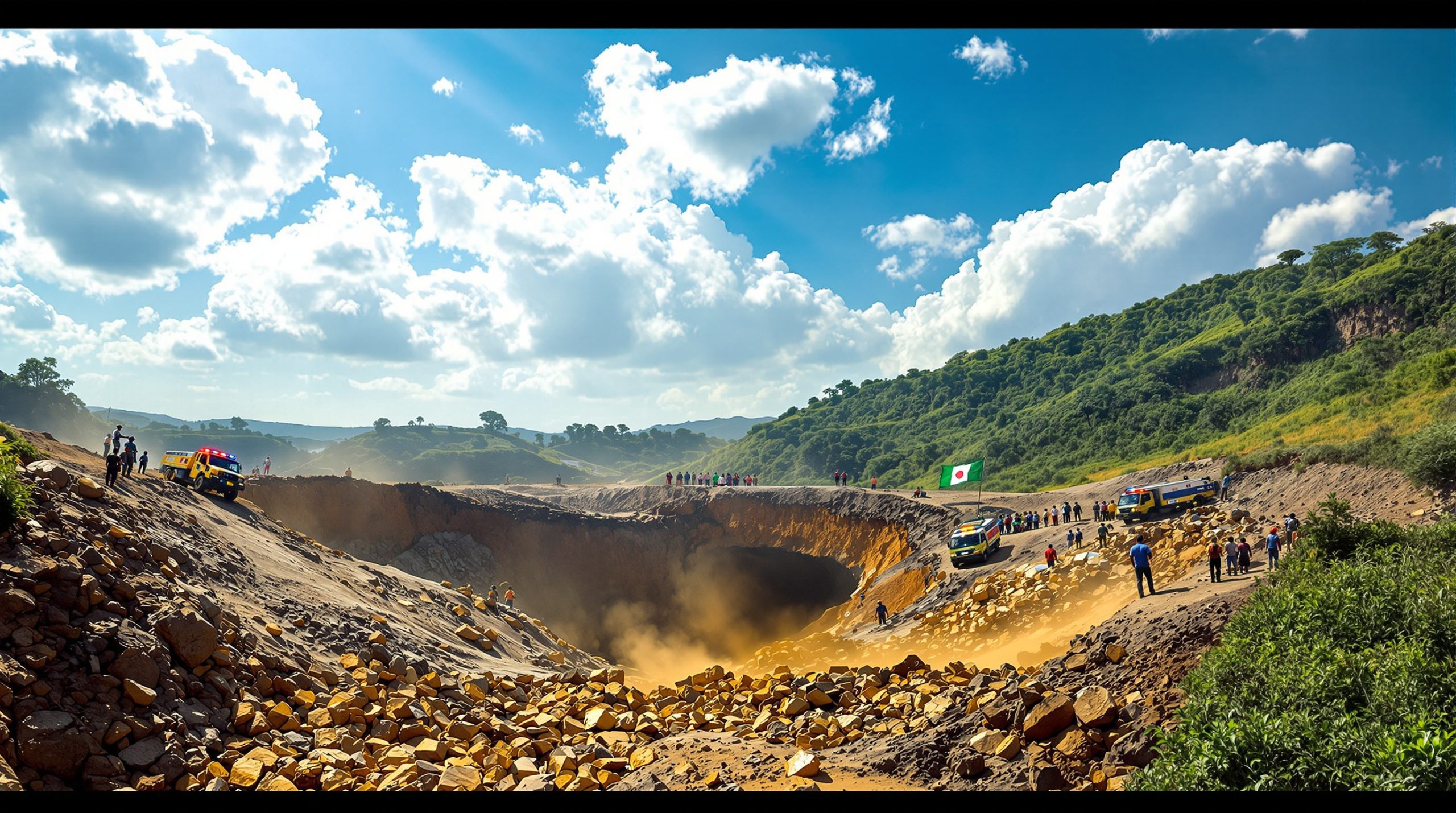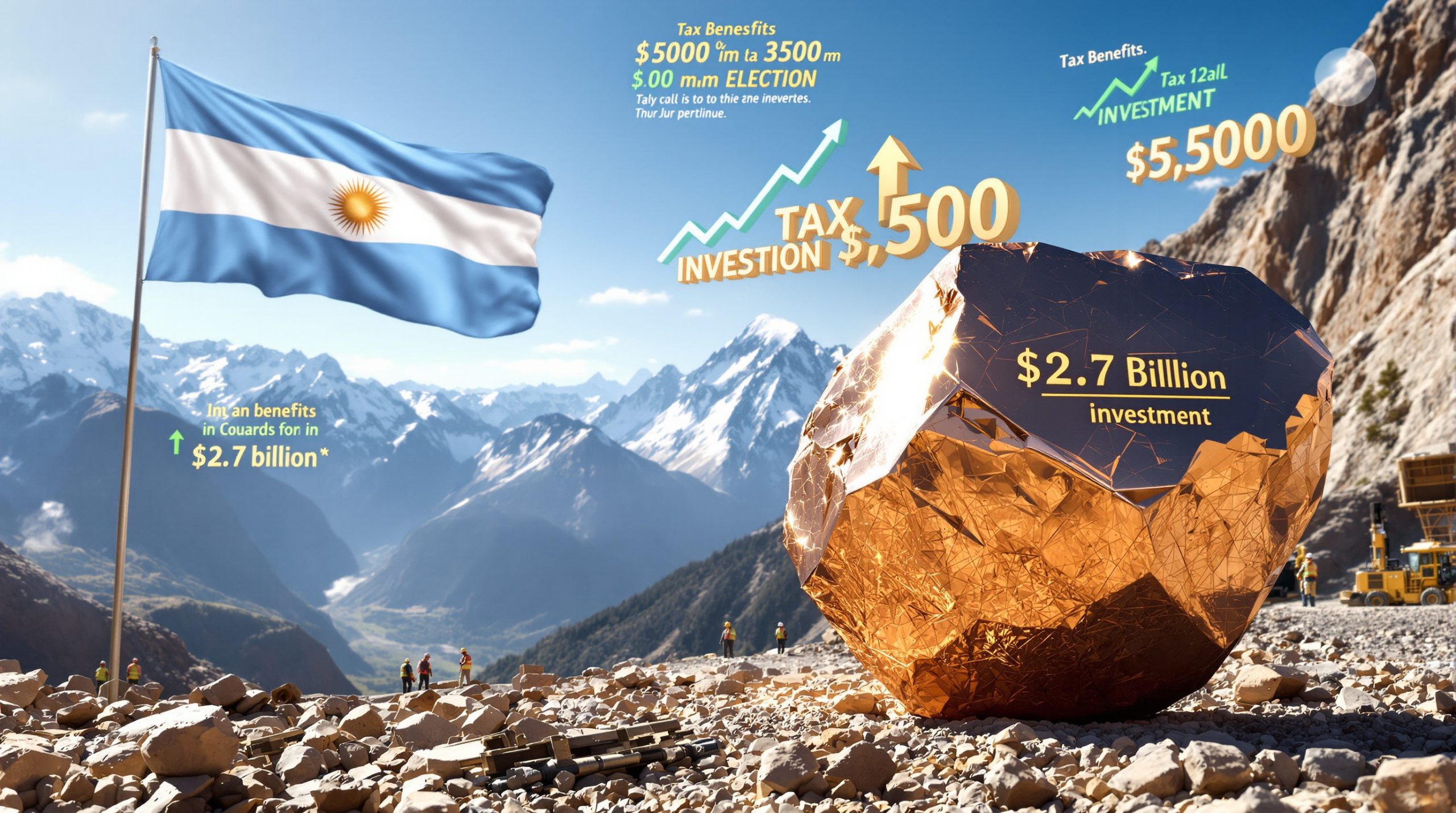Understanding the Trafigura-Chemaf Financing Deal: Strategic Implications and Market Impact
The Trafigura-Chemaf financing arrangement represents a pivotal $600 million investment package established in 2022 between global commodities trading giant Trafigura and Chemaf Resources, a major copper and cobalt producer in the Democratic Republic of Congo (DRC). This strategic partnership was structured to finance the development of Chemaf's mining operations, with particular emphasis on the Mutoshi project, which was positioned to become one of the world's largest cobalt mines upon completion.
Key Components of the Initial Financing Arrangement
The 2022 financing deal included a $600 million loan facility provided by Trafigura, designed to fund both the upgrade of Chemaf's existing Etoile mine and the development of the flagship Mutoshi project. According to Bloomberg reporting, the Mutoshi project was designed with impressive production targets of 16,000 tons of cobalt and 50,000 tons of copper annually, positioning it as a significant contributor to global supply chains.
The arrangement granted Trafigura exclusive marketing rights for materials produced at Chemaf's operations, securing a reliable supply chain for critical minerals energy transition while providing Chemaf with the capital needed to develop processing facilities at strategic locations in Kolwezi and Lubumbashi.
How Did the Financing Structure Evolve Over Time?
The Trafigura-Chemaf financing structure demonstrated increasing complexity as the project developed. While the initial arrangement centered on direct financing from Trafigura, the partnership soon required additional investment channels to support the ambitious mining operations.
Financial Challenges and Restructuring
Despite the substantial initial investment, Chemaf encountered significant financial pressures that hampered project completion. By September 2025, these challenges had escalated to the point where Chairman Shiraz Virji informed employees that operations would cease by November without securing new investment, as reported by Bloomberg News.
The company's inability to complete its development projects despite the $600 million financing package highlights the substantial capital requirements and financial risks associated with large-scale mining operations in the DRC.
Why is the Trafigura-Chemaf Deal Strategically Important?
Global Supply Chain Significance
The Trafigura-Chemaf partnership represents a critical investment in cobalt production, a metal essential for electric vehicle batteries and aerospace applications. With the DRC producing approximately three-quarters of global cobalt supply according to Bloomberg reporting, any significant production facility in the region carries substantial weight in global markets.
The Mutoshi project's projected annual output of 16,000 tons of cobalt would make it the third-largest cobalt mine globally, addressing growing concerns about supply chain security for critical minerals amid surging demand from green technology sectors.
Geopolitical Dimensions
The deal highlights the intensifying competition between Western and Chinese interests in African mining assets. As reported by Bloomberg News, US officials urged President Felix Tshisekedi's administration to prevent the transfer of Chemaf to Chinese interests, demonstrating the strategic importance the Trump critical minerals order places on securing access to critical minerals.
The blocking of the sale to Norin Mining (a Chinese state-owned entity) in March 2025 illustrates how the DRC has become a focal point in the strategic rivalry between global powers seeking to control critical mineral supply chains. This intervention reflects broader concerns about Chinese dominance in battery metal production and processing capabilities, which has significant US-China trade war impacts.
What Challenges Has the Trafigura-Chemaf Partnership Faced?
Financial and Operational Hurdles
Chemaf has faced mounting financial difficulties that ultimately threatened its operational viability. In a September 2025 communication to employees, Chairman Shiraz Virji cited "significant and unsustainable financial pressure" as the driving force behind the potential cessation of operations, according to Bloomberg News reporting.
Despite producing approximately 20,000 tons of copper in the previous year, the company struggled to complete its development projects, suggesting that construction costs may have significantly exceeded initial budget projections.
Corporate Restructuring Attempts
Chemaf actively sought acquisition partners to address its financial shortfalls. A proposed sale to Norin Mining, a subsidiary of Chinese state-owned arms manufacturer Norinco Group, was arranged but ultimately abandoned in March 2025 after Congolese authorities withheld necessary approvals.
Bloomberg reported that Congo's state miner Gecamines, which owns the permit that Chemaf leases for the Mutoshi project, objected to the transaction. US diplomatic pressure reportedly influenced this decision, reflecting the strategic importance of cobalt resources in US-China competition.
By July 2025, Bloomberg reported that negotiations had shifted to a US consortium that included New York-headquartered Orion Resource Partners along with individuals with backgrounds in special forces and intelligence operations.
How Does the Mutoshi Project Compare to Other Global Cobalt Operations?
Production Potential and Strategic Importance
The Mutoshi project represents one of the most significant undeveloped cobalt resources globally. With projected annual production of 16,000 tons of cobalt, the project would rank as the world's third-largest cobalt mine when fully operational. This substantial output would contribute approximately 7% to global cobalt production, making it a key asset in international mineral markets.
Beyond its size, the project's importance is magnified by its location in the DRC, which produces approximately three-quarters of the world's cobalt according to Bloomberg reporting. The concentration of this critical resource in a single country heightens the strategic significance of major mining operations in the region.
Development Status and Challenges
Despite significant investment, the Mutoshi project remained incomplete as of September 2025. The development delays and financial challenges facing Chemaf illustrate the complex operational environment in the DRC mining sector, where political, financial, and logistical hurdles can significantly impact project timelines.
What Are the Implications for Global Cobalt Markets?
Supply Chain Disruptions
The potential shutdown of Chemaf's operations threatens to disrupt projected global cobalt supply at a time when demand for battery metals continues to grow. As a substantial future contributor to global cobalt production, the uncertainty surrounding the Mutoshi project creates significant implications for supply chain planning among battery manufacturers and electric vehicle producers.
Regulatory Environment and Export Restrictions
Congo's implementation of cobalt export restrictions adds another layer of complexity to global market dynamics. According to Bloomberg reporting, the DRC has announced strict export quotas of approximately 97,000 tons for both 2026 and 2027, representing less than half of the country's cobalt production from the previous year.
The partial lifting of the export ban from mid-October 2025 provides some relief, but the overall restrictions signal Congo's determination to capture more value from its mineral resources through domestic processing and beneficiation. These policy changes will likely contribute to price volatility and supply uncertainty in global cobalt markets.
Who Are the Key Stakeholders in the Trafigura-Chemaf Arrangement?
Corporate Entities
The primary corporate stakeholders include Trafigura Group, a global commodities trading company that provided the initial $600 million financing, and Chemaf Resources, the DRC-based mining company with approximately 3,000 employees according to Bloomberg reporting.
Gecamines, Congo's state mining company, holds significant influence as the owner of the permit that Chemaf leases for the Mutoshi project. Their objection to the proposed Chinese acquisition demonstrates their ability to shape corporate transactions involving strategic mineral assets.
The reported US consortium including Orion Resource Partners emerged as a potential acquirer following the blocked Chinese deal, highlighting the evolving landscape of international investors interested in African mining assets.
Government Interests
The DRC government maintains substantial control over mining sector development through regulatory approvals and state-owned enterprises like Gecamines. Their decision to block the sale to Chinese interests demonstrates their active role in determining ownership of strategic resources.
The Trump administration has shown significant interest in securing US access to critical minerals, with Bloomberg reporting that US officials actively discouraged the transfer of Chemaf to Chinese ownership. This intervention reflects broader US strategies to reduce dependence on China for battery metals and other critical minerals.
What Does the Current Situation Mean for Chemaf's Future?
Critical Decision Points
Chemaf faces an existential crisis with operations scheduled to cease by the end of November 2025 without securing new investment. The stakes are high with approximately 3,000 direct jobs at risk, according to Bloomberg reporting.
Chairman Virji's communication indicated that the company was working with Congolese authorities and partners to "identify and secure" potential investors while aiming "to achieve a transaction that enables the repayment of our debts" and the completion of unfinished projects.
Potential Outcomes
Several outcomes remain possible for Chemaf. The reported negotiations with a US-backed consortium could result in new ownership and continued operations. Alternatively, failure to secure investment could lead to an extended production suspension, leaving valuable mineral resources undeveloped.
The resolution of Chemaf's situation will provide important signals about the future direction of DRC mining sector development and international investment patterns in critical minerals.
How Does This Case Reflect Broader Trends in Critical Minerals Financing?
Strategic Competition Dynamics
The Trafigura-Chemaf situation illustrates the intensifying competition between the US and China for access to battery metals and other critical minerals. Bloomberg reporting indicates that Congo has become "an important element" of US plans to reduce China's dominance over supply chains of key minerals including copper, cobalt, lithium, and tantalum.
The Trump administration's approach to critical minerals emphasizes securing supply chains and reducing dependence on Chinese processing capacity, reflecting a shift toward viewing mineral resources through a national security lens rather than purely commercial considerations.
Evolving Financing Models
The case demonstrates how commodity traders like Trafigura have expanded beyond traditional trading activities to become significant providers of project finance in resource-rich developing countries. This evolution reflects both the strategic importance of securing access to critical minerals and the challenges traditional mining companies face in financing large-scale projects in complex jurisdictions.
The reported involvement of specialized investment firms like Orion Resource Partners alongside individuals with intelligence and special forces backgrounds suggests that critical minerals financing is increasingly attracting non-traditional investors with strategic rather than purely financial motivations.
What Lessons Can Be Learned from the Trafigura-Chemaf Situation?
Project Development Considerations
The financial challenges facing Chemaf highlight the importance of robust project planning and risk management in complex mining jurisdictions. Even with substantial initial financing, large-scale mining projects in challenging environments can encounter significant obstacles that threaten their completion.
Companies operating in strategic mineral sectors must account for heightened political risks, as government interventions based on national security or strategic resource considerations can significantly impact corporate transactions and operational planning.
Strategic Implications for Mining Companies
The case demonstrates how mining assets in critical mineral sectors have become focal points in geopolitical competition, with ownership decisions increasingly influenced by strategic rather than purely commercial considerations. Companies must navigate this complex landscape by building relationships with multiple stakeholders and understanding the broader strategic context of their operations.
The growing emphasis on supply chain security for critical minerals creates both challenges and opportunities for mining companies. While government interventions may complicate certain transactions, strategic alignment with national priorities can potentially unlock new sources of support and financing. Furthermore, the Trafigura-Chemaf case illustrates emerging industry consolidation trends and the broader mining industry evolution taking place globally.
FAQ: Key Questions About the Trafigura-Chemaf Deal
How much cobalt does the DRC produce globally?
According to Bloomberg reporting, the Democratic Republic of Congo produces approximately three-quarters of the world's cobalt supply, making it the dominant global source for this critical battery metal.
What makes the Mutoshi project significant?
Upon completion, Mutoshi is projected to become the third-largest cobalt mine globally, with annual production capacity of 16,000 tons of cobalt and 50,000 tons of copper according to Bloomberg reporting. This substantial output would represent approximately 7% of global cobalt production.
Why did Congo block the sale to Chinese interests?
According to Bloomberg reporting, Congo's state miner Gecamines, which owns the permit Chemaf leases for the Mutoshi project, objected to the transaction. US officials also urged President Felix Tshisekedi's administration to prevent the transfer to the Chinese firm, reflecting growing strategic competition for critical minerals.
What alternatives is Chemaf pursuing?
Bloomberg reported in July 2025 that a US consortium involving ex-special forces and intelligence personnel was negotiating the purchase of Chemaf. This proposal involves New York-headquartered Orion Resource Partners and represents an alternative to Chinese investment.
How many jobs are at risk if Chemaf ceases operations?
According to Bloomberg reporting, approximately 3,000 direct employees would be affected if Chemaf follows through on its announced plan to cease operations in November 2025 without securing new investment.
Want to Capitalise on the Next Major Mineral Discovery?
Stay ahead of market movements and receive instant alerts when significant ASX mineral discoveries are announced, powered by Discovery Alert's proprietary Discovery IQ model that turns complex mineral data into actionable insights. Explore Discovery Alert's dedicated discoveries page to understand how major mineral findings historically generate exceptional returns for early investors.




